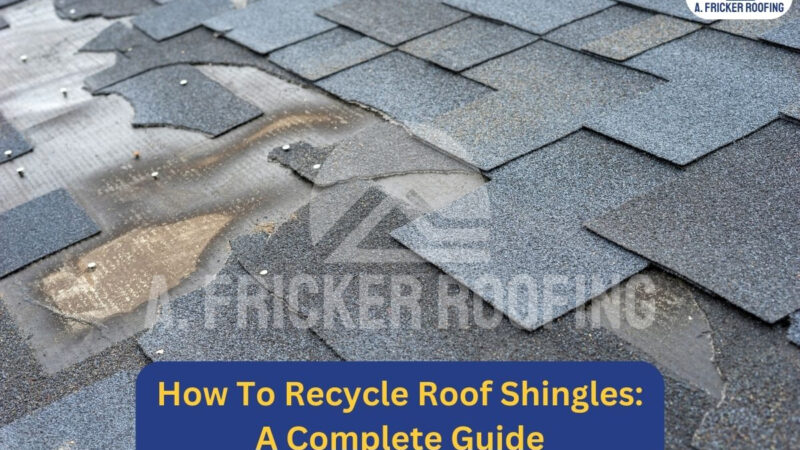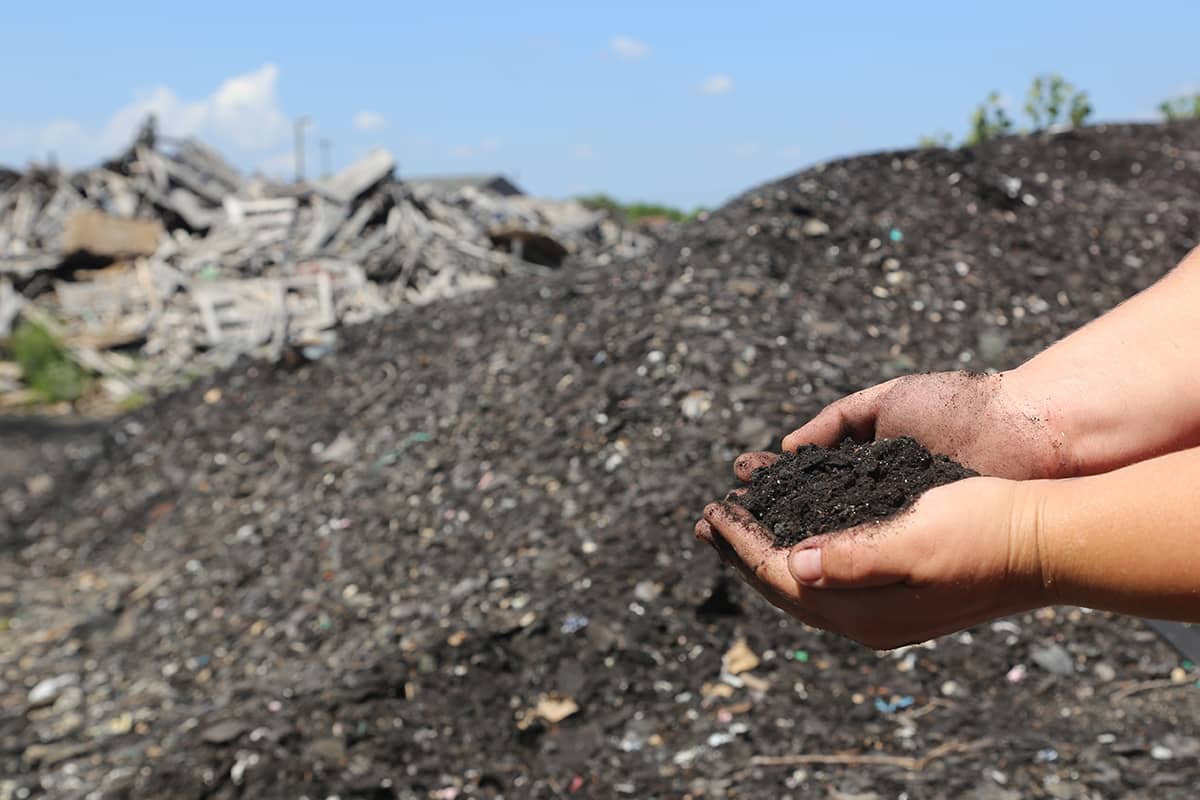Recycled Shingles

Recycled shingles represent a significant advancement in sustainable building practices. This innovative approach diverts tons of waste from landfills, significantly reducing environmental impact while offering economic benefits. By transforming discarded roofing materials into valuable resources, we can lessen our carbon footprint and create a more circular economy in the construction industry. This exploration delves into the various aspects of recycled shingle utilization, from the environmental advantages to the economic implications and technological advancements driving this sustainable initiative.
The process of recycling asphalt shingles involves several key steps, from collection and sorting to processing and the creation of new products. Understanding these steps is crucial to appreciating the full potential of this environmentally friendly alternative. This discussion will examine the different methods used, comparing their effectiveness and economic viability, and highlighting the potential for future innovations in this field.
Environmental Impact of Recycled Shingles
Recycling asphalt shingles offers significant environmental advantages over landfilling, contributing to a more sustainable approach to waste management and construction. This section details the environmental benefits, focusing on greenhouse gas emission reduction and energy consumption comparisons.
Environmental Benefits of Asphalt Shingle Recycling
Recycling asphalt shingles diverts waste from landfills, reducing the strain on these already overburdened sites. Landfilling contributes to soil and water contamination, while recycled shingles can be repurposed into valuable materials. The process itself consumes less energy than manufacturing new shingles from virgin materials.
Greenhouse Gas Emission Reduction
The manufacturing of asphalt shingles from virgin materials is energy-intensive, contributing to greenhouse gas emissions. Recycling significantly reduces this impact by using less energy and lowering the need for new material extraction. Studies have shown that recycling asphalt shingles can reduce CO2 emissions by an estimated 20-30% compared to using virgin materials.
Energy Consumption in Shingle Manufacturing
Producing asphalt shingles from recycled materials requires considerably less energy than using virgin materials. The energy savings stem from the reduced need for mining, processing, and transporting raw materials. This energy efficiency translates to a smaller carbon footprint and reduced reliance on fossil fuels.
Environmental Impact Comparison of Shingle Disposal Methods

Source: roofingcalc.com
| Method | Greenhouse Gas Emissions (kg CO2e/ton) | Landfill Space Used (m³/ton) | Energy Saved (MJ/ton) |
|---|---|---|---|
| Landfill | High (estimated 100-150) | High | 0 |
| Recycling | Low (estimated 30-50) | Low | High (estimated 500-700) |
| Incineration | Medium (estimated 70-90) | Low | Low |
Recycling Processes and Technologies

Source: green-earth-recycling.com
Several methods exist for recycling asphalt shingles, each with varying degrees of efficiency and cost-effectiveness. These processes typically involve separating the asphalt binder from other components like fiberglass.
Methods for Recycling Asphalt Shingles
Common methods include: crushing and processing into modified asphalt binders for road construction; using the shingles as a component in asphalt pavement; and processing the shingles into roofing underlayment. The choice of method depends on factors like the scale of the operation, available technology, and local regulations.
Technologies for Separating Asphalt
Technological advancements have improved the efficiency of separating asphalt from other materials. These technologies include thermal processes that melt and separate the asphalt, and mechanical processes that physically separate the components. The selection of technology depends on factors such as the desired product quality and the cost-effectiveness of the process.
Efficiency and Cost-Effectiveness of Recycling Techniques

Source: africkerroofing.com
The efficiency and cost-effectiveness of various recycling techniques vary depending on several factors, including the scale of the operation, the type of equipment used, and the market demand for recycled products. Generally, larger-scale operations tend to be more efficient and cost-effective. Technological advancements are continuously improving the efficiency and reducing the cost of shingle recycling.
Flowchart of a Typical Shingle Recycling Process, Recycled shingles
A typical shingle recycling process begins with the collection and transportation of waste shingles. These are then processed, typically involving crushing and separation of the asphalt binder. The separated asphalt is then used in various applications such as road construction, while other components may be landfilled or repurposed if possible. A final quality control step ensures the material meets the required specifications.
Applications of Recycled Shingles
Recycled asphalt shingles find diverse applications in various industries, offering a sustainable alternative to virgin materials. This section explores these applications and their performance characteristics.
Applications in Construction and Other Industries
Recycled asphalt shingles are primarily used in road construction as a component in asphalt pavement. They are also used in the production of roofing underlayment and other construction materials. Other potential applications include using fibers in composite materials.
Examples of Products from Recycled Shingles
Recycled asphalt shingles are used in the production of asphalt pavement, improving the durability and longevity of roads. They can also be used in the manufacturing of roofing underlayment, providing a cost-effective and sustainable alternative to traditional materials. Some manufacturers are exploring the use of recycled shingle fibers in composite materials for various applications.
Performance Characteristics of Recycled Shingle Materials
Materials made from recycled shingles generally exhibit comparable or even superior performance characteristics to those made from virgin materials. For example, asphalt pavement made with recycled shingles often shows improved durability and resistance to cracking. However, the specific performance characteristics can vary depending on the recycling process and the specific application.
Potential Future Applications for Recycled Shingles
Future applications for recycled asphalt shingles may include using the fibers in the manufacturing of various composite materials and exploring the use of the asphalt binder in other applications beyond road construction. Research and development efforts are continuously exploring new and innovative ways to utilize recycled asphalt shingles.
Economic Aspects of Recycled Shingle Programs
Implementing shingle recycling programs offers substantial economic benefits for municipalities and businesses. This section explores the cost savings, job creation, and economic growth opportunities associated with these programs.
Economic Benefits for Municipalities and Businesses
Recycling programs reduce landfill disposal costs, generating savings for municipalities. Businesses can also benefit from cost reductions in material sourcing and potential new revenue streams from selling recycled materials. Additionally, these programs can attract environmentally conscious customers.
Cost-Saving Opportunities
Recycling asphalt shingles significantly reduces the costs associated with landfill disposal, including tipping fees and transportation costs. The use of recycled materials in construction projects can also lead to cost savings compared to using virgin materials.
Contribution to Job Creation and Economic Growth
Shingle recycling programs create jobs in the collection, processing, and manufacturing of recycled products. This can stimulate local economies and provide opportunities for entrepreneurship and business development in the recycling sector. The demand for recycled materials also supports the growth of related industries.
Cost Comparison: Landfill Disposal vs. Recycling
| Cost Item | Landfill Disposal Cost ($/ton) | Recycling Cost ($/ton) | Cost Difference ($/ton) |
|---|---|---|---|
| Tipping Fees | 50-100 | 10-20 | 30-80 |
| Transportation | 10-20 | 10-20 | 0-10 |
| Processing | 0 | 20-40 | -20 to -40 |
| Total | 60-120 | 40-80 | -20 to 40 |
Challenges and Opportunities in the Recycled Shingle Industry
Despite the benefits, several challenges hinder the widespread adoption of shingle recycling. This section identifies these challenges and proposes solutions to promote greater adoption.
Challenges Hindering Widespread Adoption

Source: inhabitat.com
Challenges include the logistical difficulties of collecting and transporting shingles from scattered locations, the need for specialized processing facilities, and the lack of consistent market demand for recycled shingle products. Inconsistent regulations and lack of public awareness also contribute to the problem.
Logistical Difficulties in Collection and Processing

Source: inhabitat.com
Collecting and transporting shingles from various locations can be costly and logistically challenging, particularly in areas with dispersed housing. Establishing efficient collection networks and optimizing transportation routes are crucial for improving the feasibility of recycling programs.
Technological Advancements to Overcome Challenges
Technological advancements in shingle processing and the development of new applications for recycled materials can help address these challenges. Innovations in separation techniques and the creation of high-value products from recycled shingles can improve the economic viability of recycling programs.
Policy Recommendations to Encourage Shingle Recycling
Policy recommendations include implementing incentives for recycling, such as tax credits or subsidies; establishing clear regulations and standards for recycled shingle materials; and raising public awareness of the environmental and economic benefits of shingle recycling. Government support and investment in research and development are also crucial.
Visual Representation of Recycled Shingles
Recycled asphalt shingles, in their various applications, present a unique visual character. This section describes their appearance and textural properties.
Visual Appearance in Different Applications
In asphalt pavement, recycled shingles contribute to a dark, granular texture, often indistinguishable from pavement made with virgin materials. In roofing underlayment, the recycled shingle material might appear as a dark, slightly textured sheet. The visual appearance is largely dependent on the processing method and the specific application.
Textural Properties of Recycled Shingle Materials
The texture of recycled shingle materials varies depending on the application. In pavement, the texture is typically rough and granular, providing good traction. In roofing underlayment, the texture might be smoother, depending on the manufacturing process. The overall texture is typically less uniform than that of virgin materials.
Color Variations Achievable with Recycled Shingle Materials
The color of recycled shingle materials is typically dark brown or black, reflecting the color of the asphalt binder. While significant color variation is not usually possible, the shade can vary slightly depending on the processing methods and the composition of the original shingles.
Descriptive Narrative of a Pile of Recycled Asphalt Shingles
Imagine a large pile of crushed recycled asphalt shingles. The overall color is a dark, mottled brown-black, with variations in shade reflecting the original shingle colors. The texture is rough and uneven, with a mix of granular and fibrous pieces of varying sizes. The overall impression is one of a dark, heterogeneous mass, showing the diversity of materials within the recycled product.
Q&A
What are the common uses for recycled asphalt shingles?
Recycled asphalt shingles are commonly used in the creation of asphalt pavement, roofing underlayment, and even some types of composite materials.
Is the quality of products made from recycled shingles comparable to those made from virgin materials?
In many applications, products made from recycled shingles perform comparably to, and sometimes even surpass, those made from virgin materials. Performance characteristics vary depending on the specific application and recycling process.
Are there any government incentives for using recycled shingles?
Government incentives vary by region. Some localities offer tax breaks or grants for projects utilizing recycled materials. It’s best to check with local and regional environmental agencies for specific programs.
How can I find a shingle recycling program near me?
Contact your local waste management company or search online for “asphalt shingle recycling [your location]”. Many municipalities and private companies offer shingle recycling services.
What is the lifespan of products made from recycled shingles?
The lifespan depends on the application and the quality of the recycling process. Generally, products made from recycled shingles exhibit a lifespan comparable to those made from virgin materials.
Comments are closed.